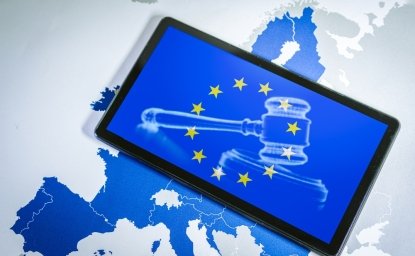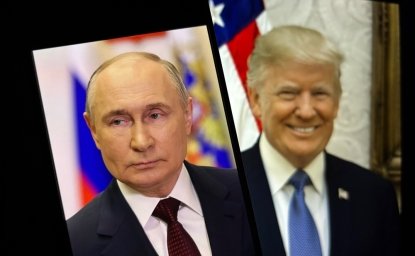259. Post-Communist Media Autonomy, Pluralism and Diversity

The importance of the media is axiomatic to the new political elites in the post-Communist nations, so they seek to own, control and, at the very least, to influence the media. Consequently, Eastern Europe's media are judged to be dependent on the state - the new political forces and the newly established market - instead of being outgrowths of civil society. Furthermore, the new media systems are seen as lacking autonomy, pluralism and diversity, not contributing to the democratization process, and worse yet, being inimical to it, thwarting citizen participation. Journalism is considered unprofessional, being tendentious, opinionated, highly politicized, often inaccurate and incomplete, and pandering "to low instincts and prurient tastes."1
The universally negative critiques of post-Communist Eastern European media systems and journalism are fundamentally flawed because they are largely based on normative, idealistic, even utopian assumptions, rather than being carried out in the context of the fluid nature of social, political, economic and, to a lesser extent, cultural changes, in which the media evolved.
Briefly examined here are media autonomy, pluralism and diversity in the context of a post-1989 Eastern Europe whose societies are poster children for unconsolidated democracies, in the decision phase of the developmental model outlined by Dankward Rustow.2
The New Post-Communist Societies
The new Eastern European media evolved in purely political societies - civil society is unevenly developed and weak - and while market economies were established, none of the economies in the region are completely on a market footing.
Ultimately, even though Robert A. Dahl's eight conditions for polyarchy - covering the main provisions of political democracy (competition, a modicum of citizen participation, and civil and political liberties) - had been met, it is clear that not all conditions favorable to the evolution of a stable polyarchy were present in the first eleven post-Communist years.3 More importantly, the cultures of Eastern Europe remain un-democratic - a strange synthesis of pre-Communist and Communist era cultures mixed with a libertarianism that is unfettered by any responsibility. They lack the core ethos of a democratic culture, which will take much time and effort to establish, with no guarantee of success. Absent a simultaneous systemic transition and a cultural transformation, we are left with "the phenomenon of a 'democratic civic masquerade,' meaning the attempt to suggest the real existence of civic commitment and democratic practice through the fulfillment of merely formal criteria."4 To put it another way, the word "democracy" is still being used to designate a form of government in Eastern Europe rather than a condition of society, as Raymond Aron correctly identified Alexis de Tocqueville's use of the word in his classic work, Democracy in America.5
Media Autonomy, Pluralism, Diversity
In the first phases of democratization, what creates new social structures is the ability to overtly and legally "oppose" or "support" and the freedom to choose. The very changes in the status of the media and journalism - that they are no longer simply Communist (or anti-Communist); that their role is now undefined, in contrast to the pre-1989 era; that they are extremely partisan and politicized in support of widely varying political orientations or ambitions; and even that they lack professionalism - contribute to the pluralism and diversity of the press.
While numbers alone do not tell the whole story of media diversity and pluralism, the dramatic multiplication of media outlets representing different allegiances and concerns suggests that a great variety of outlooks and interests are now being addressed. The media that developed in Eastern Europe from 1989 to 2000 are an extreme representation of the Western European model of pluralistic, diverse media with a full array of politically, religiously, ethnically, and culturally-oriented, as well as market-oriented, outlets. Media pluralism is clearly serving the decision phase of Eastern Europe's unconsolidated democracies.
By 2000, the media were subordinate or answerable to a fairly large number of varied interests, predominantly, though not exclusively or unalterably, political and commercial. Their ownership and the degree of their subordination and that of their journalists and journalism to these interests vary from medium to medium, country to country, and have witnessed small but important changes in the 1989 to 2000 period. In any case, ownership of the media is an insufficient gauge of their autonomy or subordination and Eastern Europe appears to prove once again that it is the "overall cultural mix...that will tend to fix the position of the media on [the subordination-autonomy] continuum."6 The problem is, in a transition environment such as the region is undergoing, we cannot pinpoint where the media stand on the continuum because the "cultural mix" is constantly changing and the legal, conceptual, structural, and even normative constraints on the media are equally as unsettled, undefined, and unsecured. Consequently, assessing media autonomy as a test of democratization and of media contributions to it is, at best, highly speculative and, in the end, fruitless.
Gauging the source, nature, and effects of the controls exercised over the media and news content may be all but impossible in Eastern Europe. Who controls or influences the media has changed many times during the post-1989 years, and so have the way this control or influence is exercised, the purposes for which it is exercised, and its consequences. A much more useful and realistic interpretation of autonomy and the important questions related to democratization, particularly in the liberalization phase of the democratization process, is the independence to provide critiques of the government in power. Such independence exists in Eastern Europe. Whether it is either effective or useful is another matter, one divorced from the issue of media independence per se.
Not being controlled by the state or driven by the market may not, in itself, make the Eastern European media more effective components of civil society, democratization, or democracy. The media's autonomy and courage depends in large measure on "the state or morale and vigor of other bodies, from schools, trade unions, and churches to legislature, governments, and courts of justice."7 Indeed, separating the media from the very institutions that contribute to the establishment of a democratic order - even if only unwittingly and indirectly - is likely to be counterproductive. Ultimately, the absence of a well-developed civil society, or even of agreement on what it should be and what, or who, should represent it, makes any assumptions about media roles and effectiveness meaningless, as it does the relationship between media effectiveness and the extant political and professional cultures.
Complete media autonomy from societal institutions is impossible because at the micro level of the individual, each journalist, editor, or broadcaster also belongs to another institution, whether political, social, or civic and cultural. Therefore, the individual represents a living link between the media and other institutions, eliminating any possibility of an idealized, pure autonomy. Finally, media effectiveness, diversity, and pluralism, their role and contribution to democratization, and the degree to which they represent "all society" depend on the individuals who make up their leadership and rank and file and, ultimately, on the individuals who make up their audiences and how they choose to use the media. That is, they depend on their audiences' political culture and their perception of "citizenship," on what they demand of the media, what media they consume, and how they use them.
Conclusion
The Eastern European media's systemic evolution, their self-prescribed or imposed roles and their unprofessional journalism mirrored and served democratization as it evolved in the 1990s. That is, the media mirrored and served liberalization by their demonopolization from Communist Party and state control and by their extreme politicization (thus pluralization) after the fall of Communism. They also served the cause of intellectual and economic pluralism. The media will become truly independent and capable of serving a democracy when "informative reliability" replaces "the domination of ideological conviction" persistent in Eastern European journalism, as Adam Michnik correctly observes.8
1Karol Jakubowicz, "From Party Propaganda to Corporate Speech? Polish Journalism in Search of a New Identity," Journal of Communication 42(3), (Summer 1992): 16.
2Dankward Rustow, "Transitions to Democracy: Toward a Dynamic Model," Comparative Politics, 2 (3), (April 1970): 337-365. Rustow suggests three phases: (1) The preparatory phase in which there is a breakdown of the non-democratic regime; (2) the decision phase in which a democratic order is first established and (3) the consolidation phase in which democracy is further developed and becomes ingrained in society.
3Robert A. Dahl, Polyarchy: Participation and Opposition (New Haven, CT: Yale University Press, 1971); Robert A. Dahl, "Democracy and Free Speech," in Toward Democracy: A Journey, Vol. 1, Reflections: 1940-1997 (Berkeley: Institute of Governmental Studies Press, University of California, 1997), 153-65.
4See for example, Christiane Lemke, "Nachholende Mobilisierung. Demokratisierung und politischer Protest in postkommunistischen Gesellschaften," Aus Politic und Zeitgeschichte, 5 (1997): 29-37.
5Raymond Aron, An Essay On Freedom (Cleveland and NY: The World Publishing Company, 1970).
6Michael Gurevitch and Jay G. Blumler, "Mass Media and Political Institutions: The Systems Approach," in George Gerbner, ed., Mass Media Policies in Changing Cultures (London: Wiley, 1977), 263.
7John Keane, The Media and Democracy (Cambridge, England: Polity Press, 1991),193.
8Adam Michnik, "After Communism, Journalism," Media Studies Journal 12 (2), (Spring/Summer 1998): 104-113.
Dr. Gross spoke at an EES noon discussion and book launch on September 26, 2002. The above is a summary of his presentation. Meeting Report #259.
Author

Global Europe Program
The Global Europe Program is focused on Europe’s capabilities, and how it engages on critical global issues. We investigate European approaches to critical global issues. We examine Europe’s relations with Russia and Eurasia, China and the Indo-Pacific, the Middle East and Africa. Our initiatives include “Ukraine in Europe”—an examination of what it will take to make Ukraine’s European future a reality. But we also examine the role of NATO, the European Union and the OSCE, Europe’s energy security, transatlantic trade disputes, and challenges to democracy. The Global Europe Program’s staff, scholars-in-residence, and Global Fellows participate in seminars, policy study groups, and international conferences to provide analytical recommendations to policy makers and the media. Read more

Explore More
Browse Insights & Analysis
360° View of How Southeast Asia Can Attract More FDI in Chips and AI

The Growing Transatlantic “Big Tech” Rift Explained

Mapping Undersea Infrastructure Attacks in the Baltic Sea
